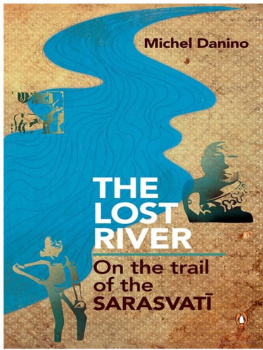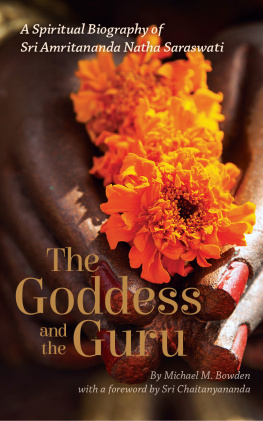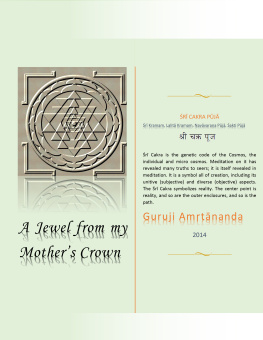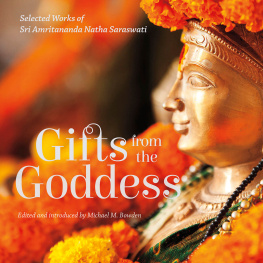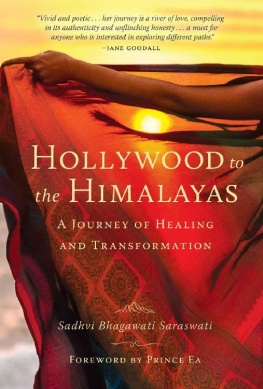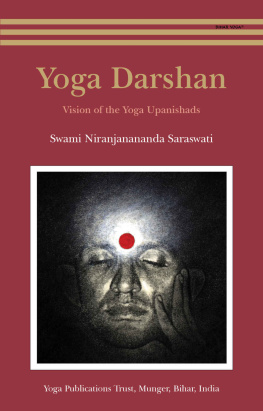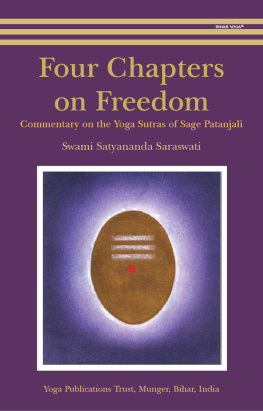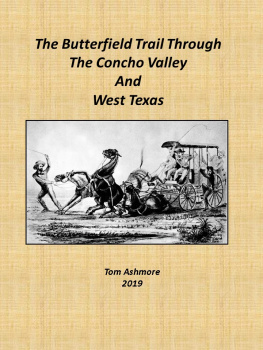Michel Danino - The Lost River: On the trail of Saraswati
Here you can read online Michel Danino - The Lost River: On the trail of Saraswati full text of the book (entire story) in english for free. Download pdf and epub, get meaning, cover and reviews about this ebook. year: 2010, genre: History / Science. Description of the work, (preface) as well as reviews are available. Best literature library LitArk.com created for fans of good reading and offers a wide selection of genres:
Romance novel
Science fiction
Adventure
Detective
Science
History
Home and family
Prose
Art
Politics
Computer
Non-fiction
Religion
Business
Children
Humor
Choose a favorite category and find really read worthwhile books. Enjoy immersion in the world of imagination, feel the emotions of the characters or learn something new for yourself, make an fascinating discovery.
- Book:The Lost River: On the trail of Saraswati
- Author:
- Genre:
- Year:2010
- Rating:3 / 5
- Favourites:Add to favourites
- Your mark:
- 60
- 1
- 2
- 3
- 4
- 5
The Lost River: On the trail of Saraswati: summary, description and annotation
We offer to read an annotation, description, summary or preface (depends on what the author of the book "The Lost River: On the trail of Saraswati" wrote himself). If you haven't found the necessary information about the book — write in the comments, we will try to find it.
The Lost River: On the trail of Saraswati — read online for free the complete book (whole text) full work
Below is the text of the book, divided by pages. System saving the place of the last page read, allows you to conveniently read the book "The Lost River: On the trail of Saraswati" online for free, without having to search again every time where you left off. Put a bookmark, and you can go to the page where you finished reading at any time.
Font size:
Interval:
Bookmark:





To the many archaeologists,
noted or forgotten,
who have diligently dug Indias soil
To my parents,
with deep gratitude
The Lost River: On the Trail of the Sarasvat attempts to popularize, in the best sense of the term, the present state of research into the legendary river. Understandably, the Sarasvat has often burst its scholarly banks to spill out into the public arena. To tell my tale, I have used a lay persons language as far as possible, but I have rested my case on the most authentic findings from a variety of disciplines.
Detailed references for all quotationswhich, let me stress, do not necessarily present the whole viewpoint of the quoted authorare found at the end of the book. (They are referred to in the text by Arabic numerals, while footnotes are referred to by asterisks.) My interpolations are within square brackets, which means that any parentheses are those of the quoted author. Except when indicated, the English translations of French texts are mine.
As the lay reader may find diacritical marks for Sanskrit words bothersome, I have only indicated long vowels, except for current geographical names: thus Yamuna is todays river, Yamun is the one in Harappan or Vedic times (in quotations, the authors usage has been left unchanged). Indian place names, once rendered into English, are often spelt with disconcerting variety; I have chosen the most common spellings, preferably official ones, mentioning alternatives when possible. For dates before the Common Era, I have used the now standard abbreviation BCE instead of BC , and CE instead of AD . Maps are important in this book; in those drawn by me, international boundaries, when they appear, are as close as possible to those found on maps approved by the Government of India, yet should be regarded as only approximate, not authentic.
While writing this book, I often felt that the Sarasvats story has the potential to captivate non-Indian readers too; I hope the brief explanations I have inserted to enable them to follow details of Indias geography and history will be excused by those familiar with them.
The motif at the end of each chapter, a bunch of three pipal leaves, is found on Harappan pottery.
*
I wish to thank the Archaeological Survey of India for its gracious permission to reproduce many photographs in this book. I am grateful to a few distinguished archaeologists, including Prof. B.B. Lal, the late Dr S.P. Gupta, Dr V.N. Misra, Dr R.S. Bisht, Prof. K.V. Raman and Dr R. Nagaswamy, who, over the course of a decade, generously shared their vast experience and patiently answered my nagging questions on various aspects of Indias protohistory. Many Indian, American and French friends helped me gather the materials for this book or drew my attention to new findings; some of them are acknowledged in the Notes at the end of the book, but I cannot fail to mention here Dr S.P. Gupta, Dr K.N. Dikshit, Prof. R.N. Iyengar, Dr Kalyanaraman, Vishal Agarwal and V. Karthik.
I am greatly indebted to Ravi Singh, chief editor of Penguin India, for his warm interest in the story of the Sarasvat; my thanks, too, to R. Sivapriya for her guidance and to Debasri Rakshit for her careful editing. The book could not have been written without the support of my parents, my companion Nicole, and a few close friends whom I need not name; they know my debt to them. Finally, I owe a special debt of gratitude to Dr Nanditha Krishna for her precious advice on the conception and plan of the book, and for her constant encouragement.

I ndia loves myths; they people every literature and every oral tradition of the land. By myth, I mean a complex, multi-layered legend that weaves together heroic deeds and divine miracles, and, through powerful symbols, imprints a set of values on the mind of a people. The myth becomes, in turn, inseparable from its peoples customs and traditions. Certain tribes of Indias Northeast enact till today scenes from the Mahbhrata or the Rmyana, the two great Indian epics, even if it means substituting bamboo huts for glittering palaces. The message is what matters, not the dcor.
And whether or not a myth has some historical basis, it is true as long as it livesand worksin the minds it has shaped. The great flood, the churning of the ocean, the descent of Gang, the construction of a bridge to Lanka by an army of monkeys, or Krishnas lifting of the Govardhan hill are, in that sense, true. Whether they are facts in our limited sense of the term is irrelevant: myths are something greater than facts. As long as we live life like a burden on our shoulders, Gilgamesh will pursue his quest for immortality, and Sisyphus will keep pushing his boulder uphill only to see it roll down again. Myths of creation, of origin or identity, myths of conquest and heroic defiance, all fulfil precise social, cultural and spiritual functions. Whether or not a myth has grown around a historical seed, it is a maker of history.
Our modern mind cannot easily grasp the role and impact of myths in ancient or traditional societies, whether Greek, Polynesian or Indian: todays societies are mythless ones; for better or worse, we have depopulated our inner worlds. In a bizarre reversal of meaning, the very word myth, which originally meant word or speech in Greek (much like the Sanskrit vch), has come to evoke a web of lies, a concocted fable or a collective delusion.
*
Our story starts with a mythical river that makes its appearance in the Rig Veda, the most ancient Indian texther appearance, rather, since the Sarasvat was also a goddess, a mother, and soon came to embody sacred speech, the Word. Multi-layered, as I said. Later texts, including the Mahbhrata, described the Sarasvat as a disappearing river, until she became invisible, meeting Gang and Yamun at their confluence; by then, she was the goddess, as we know her today.
As it happens, this myth is rooted in more than a vague historicity : we will discover how the Rig Vedas mighty river has been identified by most experts with the now dry bed of a river that once flowed through northwest India, in a course roughly parallel to the Indus, a little to the south of it. The story of the quest for the lost river has never been told in full, and there is a frequent misconception that the Sarasvats rediscovery is a recent one to be credited to satellite photography. Rather, we will see how, in the early nineteenth century, British geologists, civil and military officials started surveying the region, which today includes parts of the Indian states of Haryana, Punjab and Rajasthan and the Cholistan Desert of Pakistan; the rivers bed apart, they found its banks strewn with countless ruined settlements, mute evidence that this desolate landscape had once known better times. Indeed, by the 1850s, Indologists were in no doubt about the location of the mythic river. Decades later, hundreds of those sites were found to have belonged to the Harappan or Indus civilization, which we will visit at some length. We will discover, in particular, considerable evidence that much of its culture survived the collapse of its cities, some of which is still surprisingly alive today.
Font size:
Interval:
Bookmark:
Similar books «The Lost River: On the trail of Saraswati»
Look at similar books to The Lost River: On the trail of Saraswati. We have selected literature similar in name and meaning in the hope of providing readers with more options to find new, interesting, not yet read works.
Discussion, reviews of the book The Lost River: On the trail of Saraswati and just readers' own opinions. Leave your comments, write what you think about the work, its meaning or the main characters. Specify what exactly you liked and what you didn't like, and why you think so.

